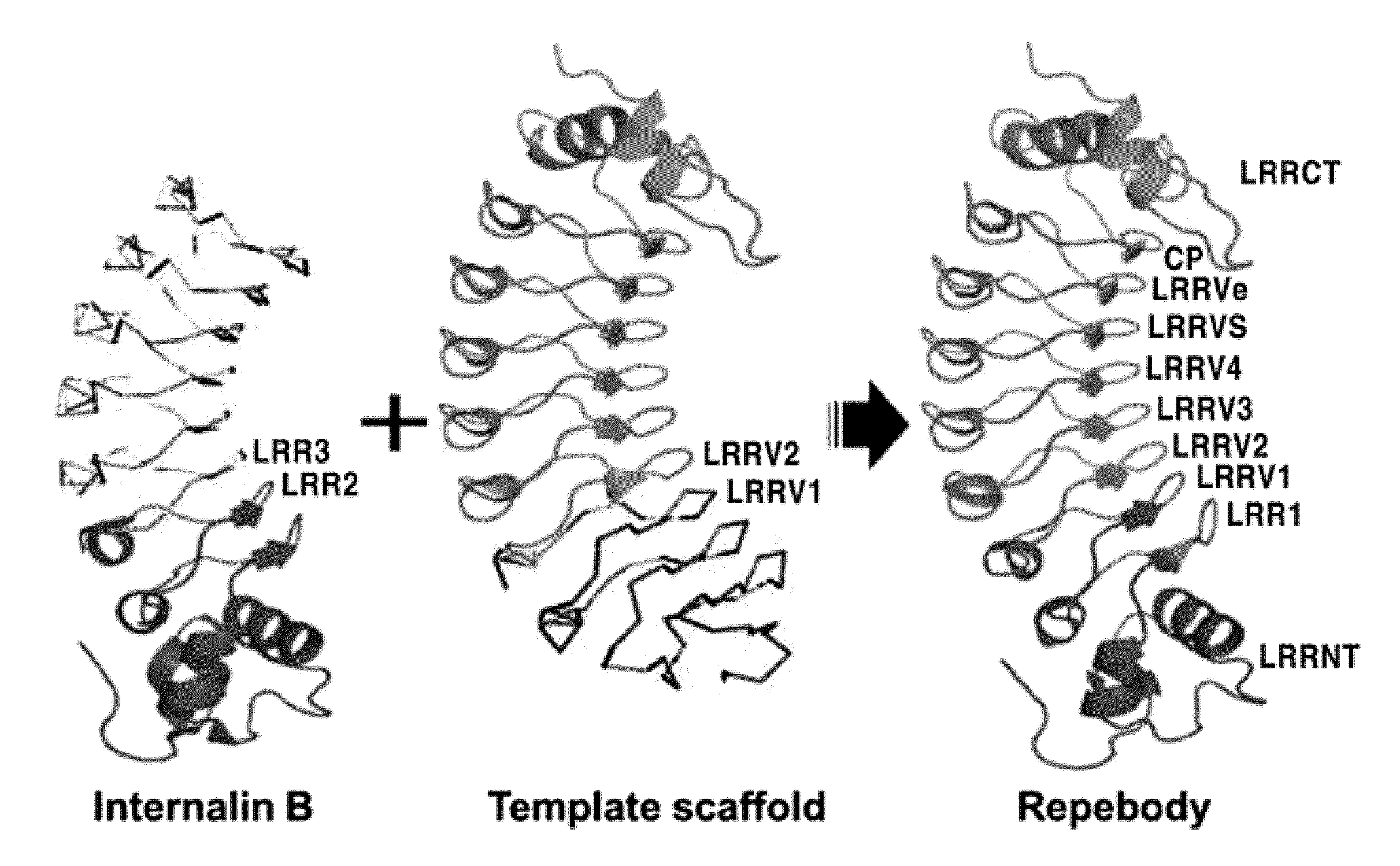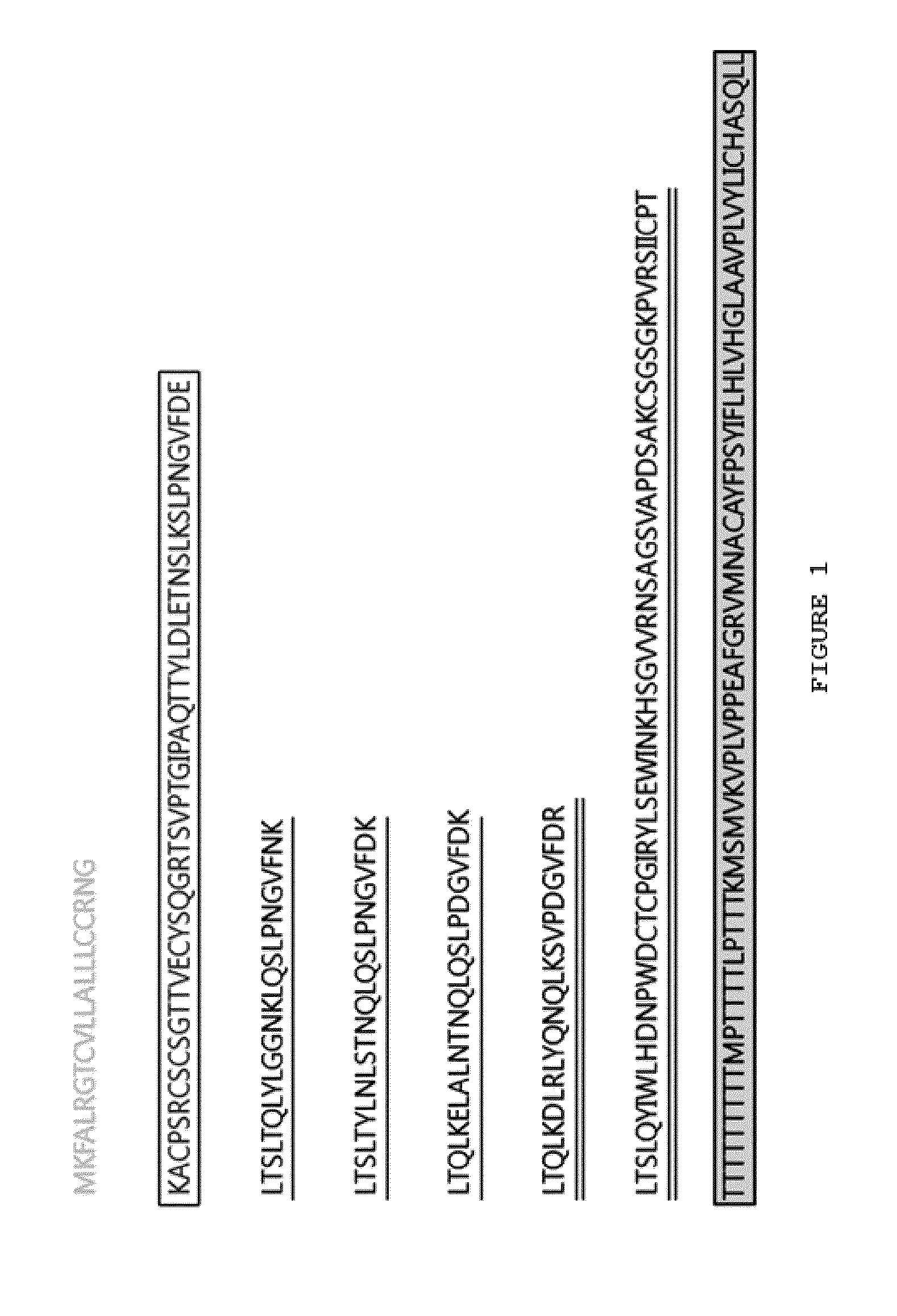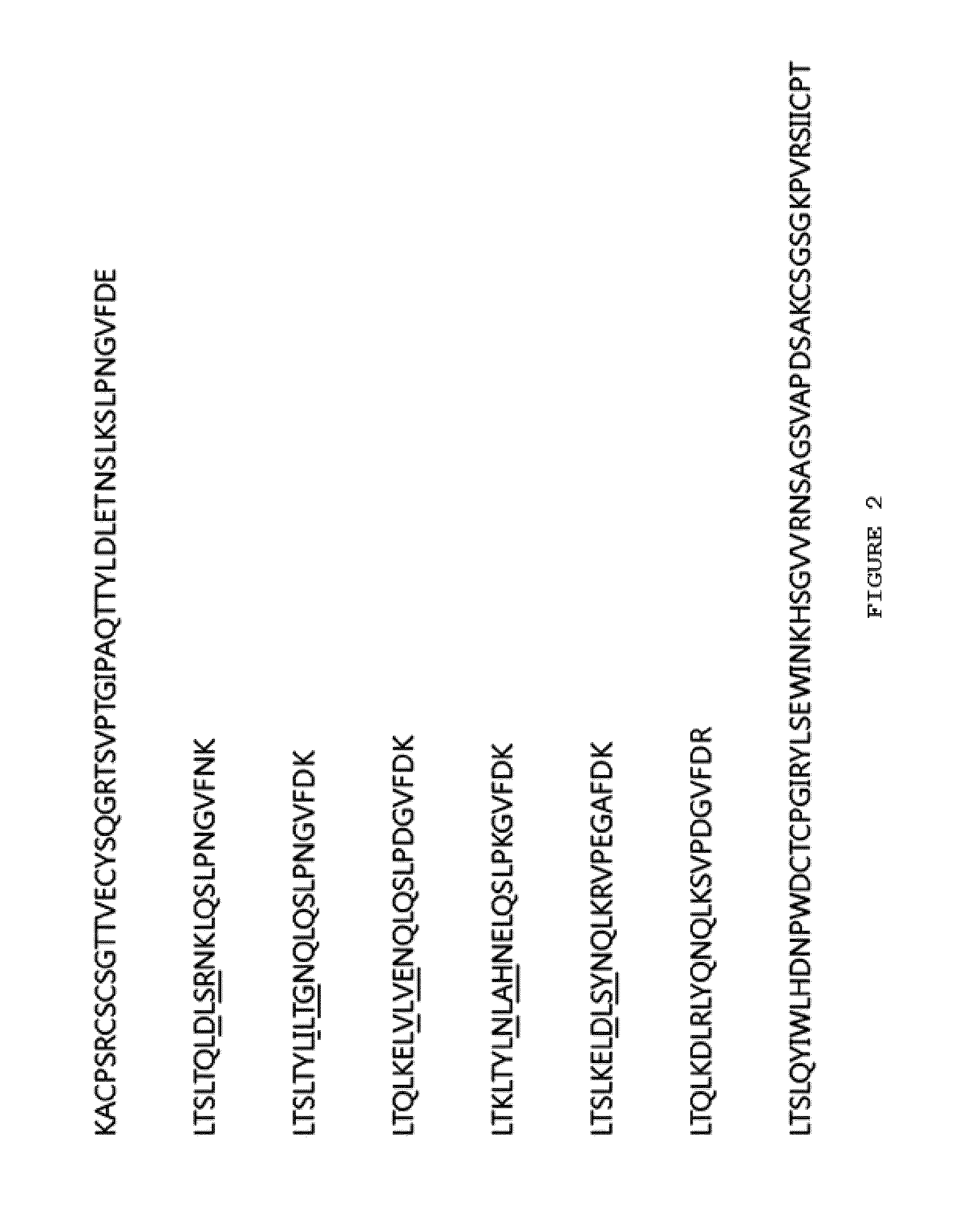Water-Soluble Polypeptides Comprised of Repeat Modules, Method for Preparing the Same and Method for a Target-Specific Polypeptide and Analysis of Biological Activity Thereof
- Summary
- Abstract
- Description
- Claims
- Application Information
AI Technical Summary
Benefits of technology
Problems solved by technology
Method used
Image
Examples
example 1
Preparation of Internalin-VLR Fusion Protein and its High Expression in E. coli
Design and Preparation of Internalin-VLR Fusion Protein
[0115]The Listeria monocytogenes-derived internalin B protein and the hagfish-derived VLR protein variant were used as the components of the present invention. The VLR protein (SEQ ID NO. 2 and FIG. 2) was prepared to have 5 repeat modules by deleting the N-terminal signal sequence region and the C-terminal stalk region, based on the structure of Eb8VLRB.59 having three repeat modules (SEQ ID NO. 1 and FIG. 1) and by adding two other naturally occurring other module sequences. The purpose of increasing the number of modules is to investigate the possibility of variations in the number of modules.
[0116]The other scaffold (SEQ ID NO. 3 and FIG. 3) was designed to have 5 repeat modules by consensus design selecting evolutionarily conserved amino acids from numerous VLR protein sequences. At this time, those having 5 repeat modules prepared as above (SE...
example 2
Design of Internalin-VLR Fusion Protein with Additional Repeat Module and its Expression
Design of Internalin-VLR Fusion Protein with Additional Repeat Module
[0123]In order to use the internalin-VLR fusion protein as a binding protein for disease target proteins that are various in type and size, it is required to modulate the number of repeat modules for adjustment of the binding area. An experiment designing a protein with one additional repeat module was performed to determine whether the N-terminus of internalin stably expresses the VLR protein when protein mutation for a larger binding area is induced by addition of a repeat module.
[0124]Based on SEQ ID NOs. 7 and 8, which are the internalin-fused scaffold prepared in Example , one additional VLR consensus module was added next to the internalin to design SEQ ID NOs. 9 and 10 (FIGS. 10 and 11).
High Soluble Expression of Fusion Protein with Additional Repeat Module in E. coli
[0125]DNA was synthesized based on SEQ ID NOs. 9 and...
example 3
Preparation of Internalin-TV3 Fusion Protein and Soluble Expression in E. coli
Design of Internalin-TV3 Fusion Protein
[0127]In order to examine whether the N-terminus of internalin is applied to other LRR family proteins, an internalin-TV3 fusion protein was designed. TV3 protein is synthesized by fusion to reveal the protein structure of one of the LRR proteins, TLR4 (Toll-like receptor-4), and is prepared by fusion of the N-terminus from TLR4 and the C-terminus from VLR. This protein was used to obtain the protein tertiary structure by expression in insect cells. There is a difficulty in low production yields, and in that it is expressed in E. coli in an insoluble form only.
[0128]The present inventors performed an experiment for the development of a linker module used for the fusion site of the N-terminus of internalin protein and TV3.
[0129]The repeat modules of TV3 protein consist of 24 or more amino acids, whereas those of internalin protein consist of 22 amino acids. Therefore...
PUM
| Property | Measurement | Unit |
|---|---|---|
| Solubility (mass) | aaaaa | aaaaa |
| Nucleic acid sequence | aaaaa | aaaaa |
| Luminescence | aaaaa | aaaaa |
Abstract
Description
Claims
Application Information
 Login to View More
Login to View More - R&D
- Intellectual Property
- Life Sciences
- Materials
- Tech Scout
- Unparalleled Data Quality
- Higher Quality Content
- 60% Fewer Hallucinations
Browse by: Latest US Patents, China's latest patents, Technical Efficacy Thesaurus, Application Domain, Technology Topic, Popular Technical Reports.
© 2025 PatSnap. All rights reserved.Legal|Privacy policy|Modern Slavery Act Transparency Statement|Sitemap|About US| Contact US: help@patsnap.com



